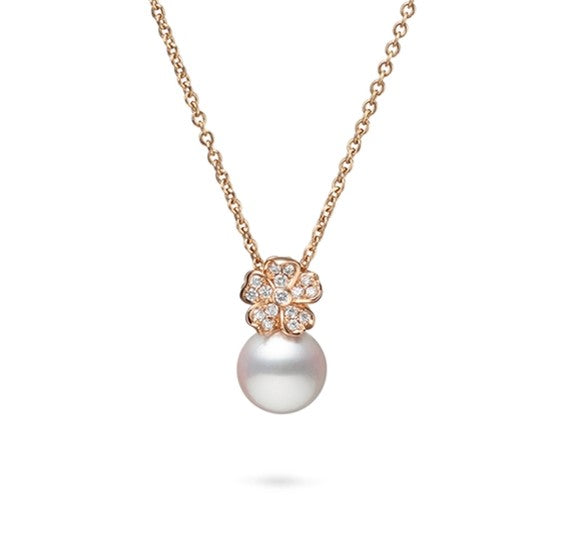
Understand the Differences & Make an Informed Choice
Diamonds have long been treasured as symbols of love and luxury. With recent advances in technology, consumers now have the option to choose between natural diamonds and lab-grown diamonds. Understanding the differences between these two types of diamonds, along with their unique characteristics and ethical considerations, can help you make an informed decision when selecting your perfect gem.
At Thomas Markle Jewelers, we offer a gorgeous array of loose diamonds, catering to every unique taste and preference. We recommend visiting in-store to see our selection of diamonds for yourself. Laying eyes on your sparkling prospective diamond is an unforgettable moment, made even more special by the unparalleled shopping experience at Thomas Markle Jewelers.
The Difference Between Natural and Lab-Grown Diamonds
The biggest difference between natural diamonds and lab-grown is their origin story.
Origins: Natural diamonds are formed deep within the Earth's mantle under extreme heat and pressure over billions of years. They are brought to the surface through volcanic eruptions and are mined from various locations around the world, including Africa, Russia and Canada.
Alternatively, lab-grown diamonds, also known as synthetic or cultured diamonds, are created in controlled laboratory environments using two primary methods: High Pressure High Temperature (HPHT) and Chemical Vapor Deposition (CVD). These processes replicate the natural conditions under which diamonds form, producing crystals that are chemically, physically and optically identical to natural diamonds.
Physical and Chemical Properties: Both natural and lab-grown diamonds are composed of pure carbon arranged in a crystal lattice structure, which gives them their exceptional hardness, durability and brilliance. They are virtually indistinguishable from each other to the naked eye and require specialized equipment to differentiate between the two. To the naked eye, they have the same brightness, fire and scintillation that makes a diamond so desirable.
Reasons to Choose Natural Diamonds
Rarity and Tradition: Natural diamonds are cherished for their uniqueness and rarity. Each natural diamond is a product of millions of years of natural processes, making it a one-of-a-kind symbol of endurance. Many people are attracted to the tradition and timeless appeal associated with natural diamonds.
Perceived Value: Natural diamonds have long been associated with luxury and status. They often hold their value well over time, making them not only a sentimental purchase but also a potential investment.
Unique Characteristics: Each natural diamond is a singular creation of nature, with unique inclusions and imperfections that tell a story of its geological journey. These natural characteristics add to the diamond's charm and individuality.
Reasons to Choose Lab-Grown Diamonds
Cost-Effectiveness: Lab-grown diamonds are typically 20-40% less expensive than their natural counterparts. This cost advantage allows consumers to purchase larger or higher-quality diamonds within the same budget, making luxury more accessible.
Lack of Inclusions: Because they are created in a lab, lab-grown diamonds are less likely to have inclusions or internal fractures. Because they are created in a lab, lab-grown diamonds are less likely to have inclusions or fractures, which can make them more durable; however, it’s important to note that both natural and lab-grown diamonds are incredibly durable and capable of withstanding everyday wear and tear.
Ethical Considerations: Lab-grown diamonds are often marketed as a more ethical choice because their production does not involve mining, which can be associated with environmental degradation and labor issues. Consumers who are concerned about the ethical implications of their purchases may prefer lab-grown diamonds for their reduced environmental and social impact.
Loose Diamonds at Thomas Markle Jewelers
Choosing between natural and lab-grown diamonds ultimately comes down to personal preference and values. Natural diamonds offer a sense of tradition, uniqueness and perceived value, making them ideal for those who appreciate the natural origins and rarity of these gems. Lab-grown diamonds, on the other hand, may provide an affordable, ethical and environmentally-friendly option, appealing to consumers who prioritize sustainability and modern advancements.
Both types of diamonds are beautiful and enduring, symbolizing love and commitment in their own unique ways. By understanding the differences, you can make an informed decision that aligns with your priorities and desires.
Whether you choose a natural diamond or a lab-grown diamond, you are investing in a piece of jewelry that will be cherished for a lifetime, reflecting your personal story. Visit Thomas Markle Jewelers at Memorial or The Woodlands to shop the area’s finest selection of diamonds today.
Related Article: Hearts on Fire - Patented Cut







